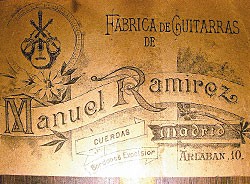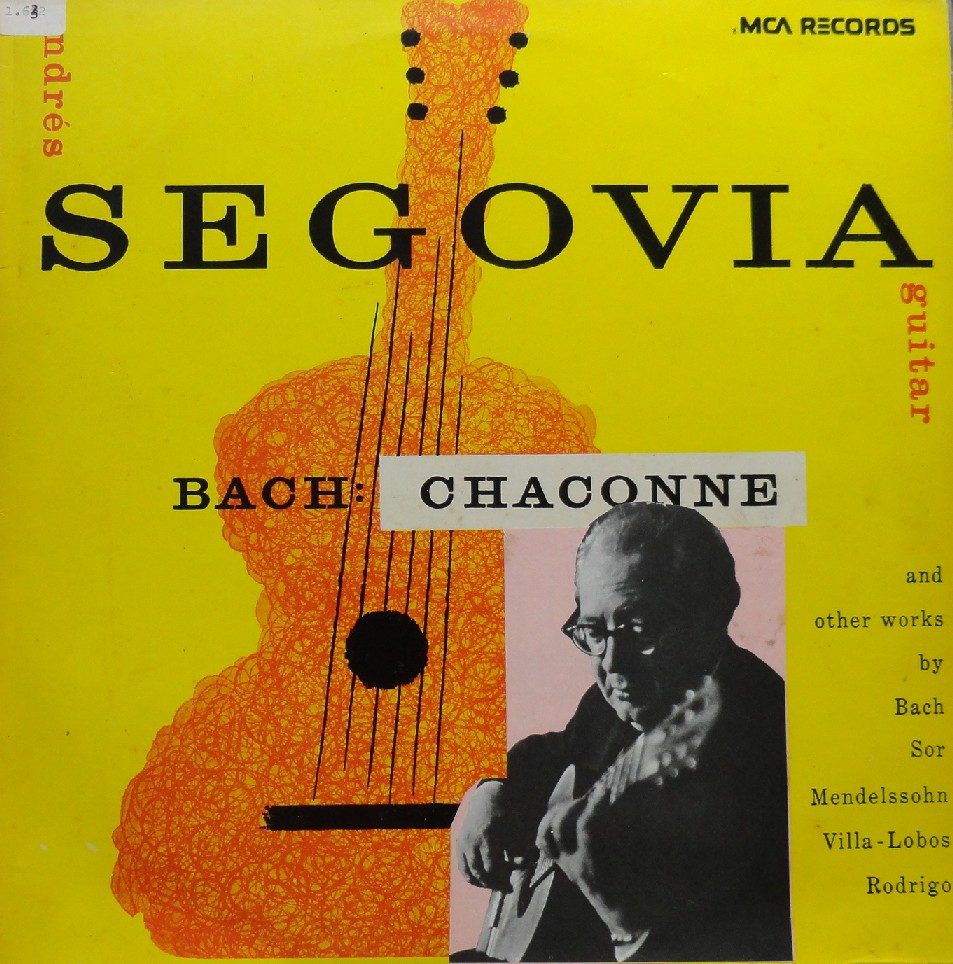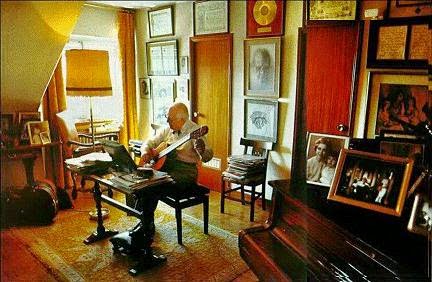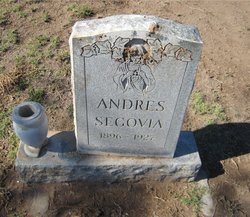Andres was born in the southern part of Spain known as Andulusia. His first experiences with guitar were with the flamenco music played in town. Flamenco music was the popular music of the day. At age ten, Andres was living with his uncle and aunt and a decision was made to move to Granada so that Andres could get a formal education. It was here that he received his first guitar.
Apparently at this early age, Segovia was already playing and performing on the guitar. His first guitar was from his friend Michael Ceron in exchange for teaching Michael all he knew about playing guitar. The guitar was build by luthier Benito Ferrer of Granada.
When Segovia was twelve he heard flamenco guitarist Gabriel Ruiz Almadovar playing the classical music of Tarrega. When Segovia met Almadovar he was told, “Did not you know that this music and others of various composers are in print?” This lead Andres to search libraries, shops and even private homes for the music for the guitar. His search for Tarregas composition came to a dead end.
It can possibly be explained because Tarrega never played music by any of those who had written for guitar. His aim to popularize the guitar and its music with his own music transcribed compositions of others.
Young Segovia carried the ideal throughout his life of not just popularizing the guitar, but also compositions of other non-guitar composers that he transcribed. Due to economic problems and the difficulty of finding a worthy instructor, Segovia moved to Cordoba and decided he would be his own instructor and pupil.
Failure during a 1909 performance gave him the push to continue by studying with some friends who were piano instructors. He believed that by studying scales and some proven piano techniques he could better his ability to master the guitar. By years end he gave another performance with much improved results.
At this time he set his goal upon mastery of the classical guitar. In his own words, “Suddenly I decided to become an apostle of the guitar.”
He then moved to Madrid. He knew that the Benito Ferrer guitar was not sufficient to meet his goals. In Madrid he went to the shop of Manuel Ramirez and asked to see his best guitar with the intent of renting the instrument. Ramirez laughed at the boy. He had not even brought a letter of recommendation.
 |
| 1912 M. Ramirez |
Segovia stood his ground and let the professor know that he was devoted to the guitar saying that he had walked in the steps of Francisco Terrega.
It was Terraga who devoted his life to the guitar with little hope of glory or vanity. At this point Manuel Ramirez was moved and effectively said, “Take the guitar kid. It’s yours. Make it flourish in your hands with your good work. Pay me back with something other than money. Do you understand?”
 |
| 1912 M. Ramirez |
 |
| Miguel Llobet |
Llobet was also an innovator that was transcribing folk works for the guitar and composing his own pieces. This strengthened public interest in the guitar.
In 1921 Segovia was introduced to Alexandre Tansman, who wrote a number of guitar works for Segovia, including one that won a prize at the Siena International Composition contest years later in 1952.
In 1924 Segovia visited the German luthier Hermann Hauser Sr. after hearing some of his instrument played at a concert in Munich. Four years later, Hauser presented Segovia with one of his personal guitars for use during his first United States tour and other concerts in 1933.
 |
| Charlie Byrd |
 |
| Fritz Kreisler |
 |
| Heitor Villa-lobos |
In 1935 Segovia gave his first public performance of Bach's Chaconne, which is a very difficult piece that Segovia had transcribed for guitar. After this composers recognized his genius and dedicated works for guitar to him.
By 1981 Segovia, the kid from Andalusia was enrobed by King Juan Carlos I of Spain who gave him the hereditary title of Margues de Salobrena.
Segovia lived in semi-retirement but would occasionally work into his old age. To be a student of Segovia was quite an honor, although I am told he was quite a task master.
He died at age 94 and is buried in his home town in Andalusia.
Segovia described his 1937 Hermann Hauser Sr. guitar that was gifted to him from the famous German luthier as “The greatest guitar of our epoch.”
The luthier had sent him 2 guitars every years for the next 13 years. Segovia’s remarks were always similar. “This is a very faithful copy (of his M. Ramirez) but with no soul.”
Finally this Hauser guitar was received to the Maestros ecstasy and put to use in his concerts and recordings for the next quarter century.
Segovia was very demanding when it came to his instruments. He had been inseparable from this instrument until 1961 when a microphone fell on it during a recording. From then on he claimed it never sounded the same. His initial meeting with Hauser was in 1924.
This guitar was actually built by Paulino Bernabe. It has his initials stamped inside the guitars heel. In 1969 Bernabe left Ramirez and set out on his own, becoming one of the most sought after luthiers of the latter 20th century.
This guitar had a 650mm scale with a wider fingerboard. It was given the designation by Ramirez of “1a” as a model standardization. The top was spruce, the back and sides were rosewood and the fretboard was ebony. The instrument is very light as is the construction.
It was restored by luthier Aaron Green for the Metropolitan Museum. The sound is said to be dark, but with a sparkling quality.
















Tidak ada komentar:
Posting Komentar